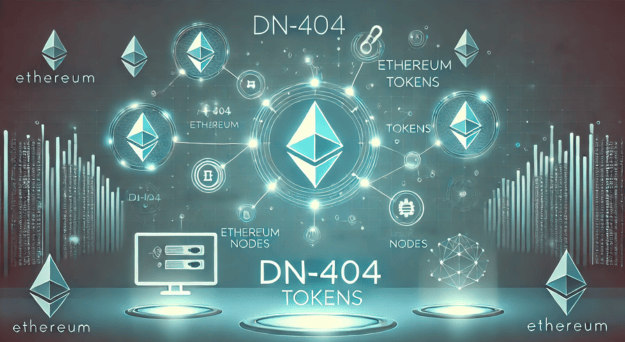As the experimental ERC-404 token standard gained popularity for merging fungible and non-fungible properties into a single token model, developers and users began to experience some growing pains. While ERC-404 unlocked powerful new use cases—particularly for NFT integration, fractional ownership, and DeFi applications—it also introduced technical inefficiencies, especially regarding network congestion and gas fees.
To address these concerns, Ethereum developers have proposed a new evolution of the standard: DN-404 (Divisible NFT-404). Designed as a cleaner, more efficient version of ERC-404, DN-404 aims to maintain hybrid functionality while solving the fee instability and contract complexity of its predecessor.
The Problems with ERC-404
ERC-404, although revolutionary, was never formally ratified as an official Ethereum token standard. It was introduced by Pandora as an experimental fusion of ERC-20 and ERC-721 contracts. However, the dual-contract structure required to simulate this fusion introduced several key issues:
1. High Gas Fees
ERC-404 implementations were gas-heavy, especially when minting, transferring, or burning tokens tied to NFTs. This posed a significant scalability challenge and made the standard less practical for frequent transactions.
2. Complex Contract Behavior
Because ERC-404 wasn’t based on native Ethereum standards, developers had to simulate hybrid behavior using custom smart contracts. This resulted in:
- Increased vulnerability to bugs
- Limited compatibility with existing DeFi and NFT tools
- Difficulty for developers to audit or extend functionality
3. Network Congestion
During peak activity—like Pandora’s launch—ERC-404 contracts caused noticeable spikes in network congestion, further pushing up transaction costs for users and reducing usability.
Introducing DN-404: A Smarter, Scalable Approach
To address these concerns, Ethereum developers introduced DN-404 (Divisible NFT-404)—a new hybrid token framework that cleans up ERC-404’s inefficiencies while preserving its core benefits.
✅ What Is DN-404?
DN-404 is a refined version of ERC-404, combining ERC-20 and ERC-721 logic more efficiently. It was designed with the following goals in mind:
- Reduce gas costs during transfers and minting
- Improve contract structure and security
- Enable broader compatibility with existing tools and protocols
How It Works:
DN-404 still maintains the concept of linked fungible tokens and NFTs, but it improves on ERC-404 by:
- Using cleaner contract logic to simulate fractional NFT ownership
- Avoiding unnecessary contract executions that spike gas
- Creating a more developer-friendly structure for building hybrid assets
Benefits of DN-404 for the Ethereum Ecosystem
1. Lower Gas Fees
By optimizing how token transfers and metadata interactions are handled, DN-404 significantly reduces gas costs compared to ERC-404. This makes hybrid tokens more feasible for everyday use.
2. Improved dApp Integration
DN-404’s cleaner structure improves compatibility with NFT marketplaces, DeFi protocols, and wallet providers, making it easier for the ecosystem to adopt hybrid token models.
3. Developer Accessibility
Smart contract developers can more easily build and audit DN-404-based contracts, opening the door for more creative use cases—like programmable collectibles, fractional real estate tokens, and in-game asset economies.
4. Network Stability
By addressing the inefficiencies of ERC-404, DN-404 contributes to better network performance, avoiding unnecessary congestion and helping maintain predictable Ethereum network fees.
What Does This Mean for ERC-404 Projects?
Existing ERC-404 projects like Pandora and DeFrogs may choose to:
- Transition to DN-404 for better scalability and user experience
- Fork and adapt existing contracts to align with DN-404’s architecture
- Maintain ERC-404 as a legacy standard while exploring DN-404 for new releases
This dual existence may mirror how other Ethereum standards (like ERC-721 vs ERC-1155) coexist, with developers choosing the best model for their specific use case.
The introduction of DN-404 marks an important milestone in the evolution of hybrid token standards. While ERC-404 pioneered the concept, DN-404 refines it, making hybrid tokens more sustainable, secure, and scalable for mass adoption.
As Ethereum continues to grow and experiment, DN-404 could become the foundation for future dApps that blend the liquidity of fungible tokens with the uniqueness of NFTs—all without compromising performance.
At Top ERC 404, we’ll continue to track the evolution of both ERC-404 and DN-404—bringing you the latest news, updates, and developer insights from the front lines of token innovation.

Leave a Reply